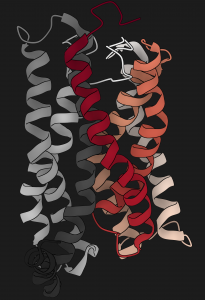Because of their pervasiveness in eukaryotic genomes and their unique properties, understanding the role that ID (intrinsically disordered) regions in proteins play in the interactome is essential for gaining a better understanding of the network. Especially critical in determining this role is their ability to bind more than one partner using the same region. Studies have revealed that proteins containing ID regions tend to take a central role in protein interaction networks; specifically, they act as hubs, interacting with multiple different partners across time and space, allowing for the co-ordination of many cellular activities. There appear to be three different modules within ID regions responsible for their functionally promiscuous behaviour: MoRFs (molecular recognition features), SLiMs (small linear motifs) and LCRs (low complexity regions). These regions allow for functionality such as engaging in the formation of dynamic heteromeric structures which can serve to increase local activity of an enzyme or store a collection of functionally related molecules for later use. However, the use of promiscuity does not come without a cost: a number of diseases that have been associated with ID-containing proteins seem to be caused by undesirable interactions occurring upon altered expression of the ID-containing protein. The paper can be found here.

